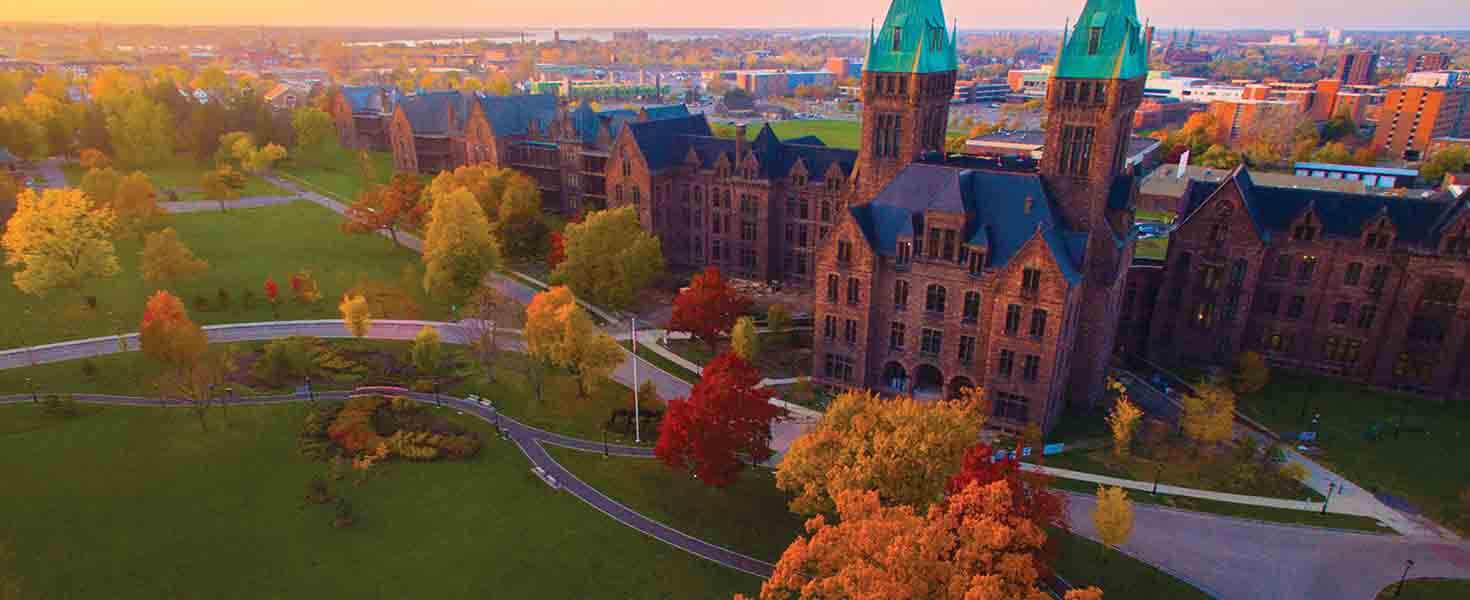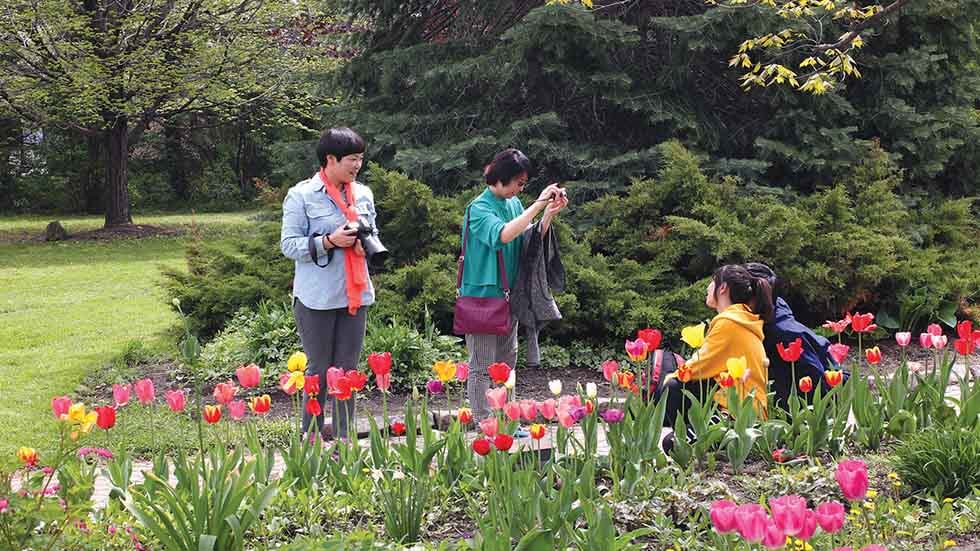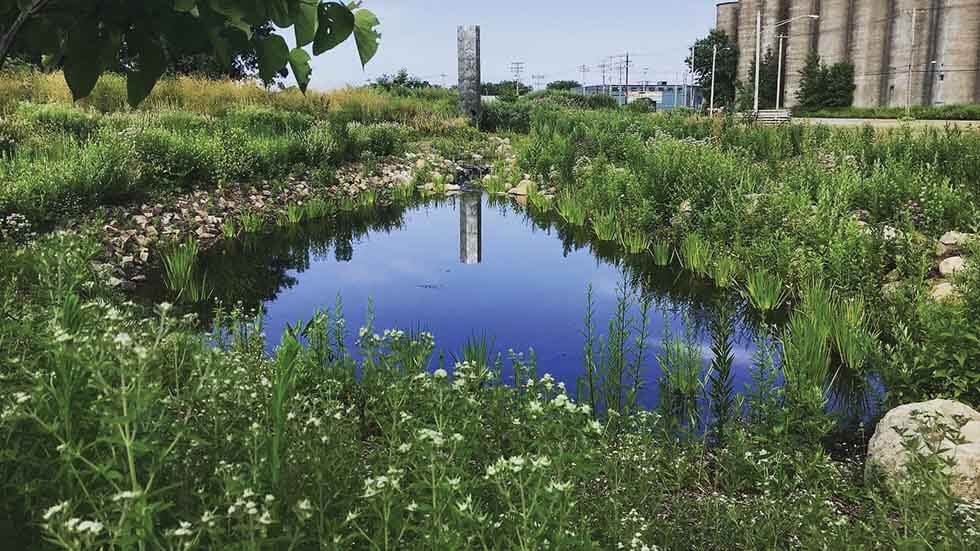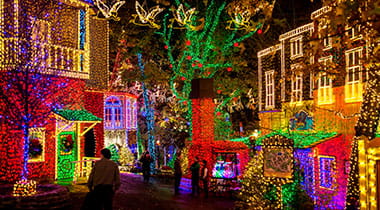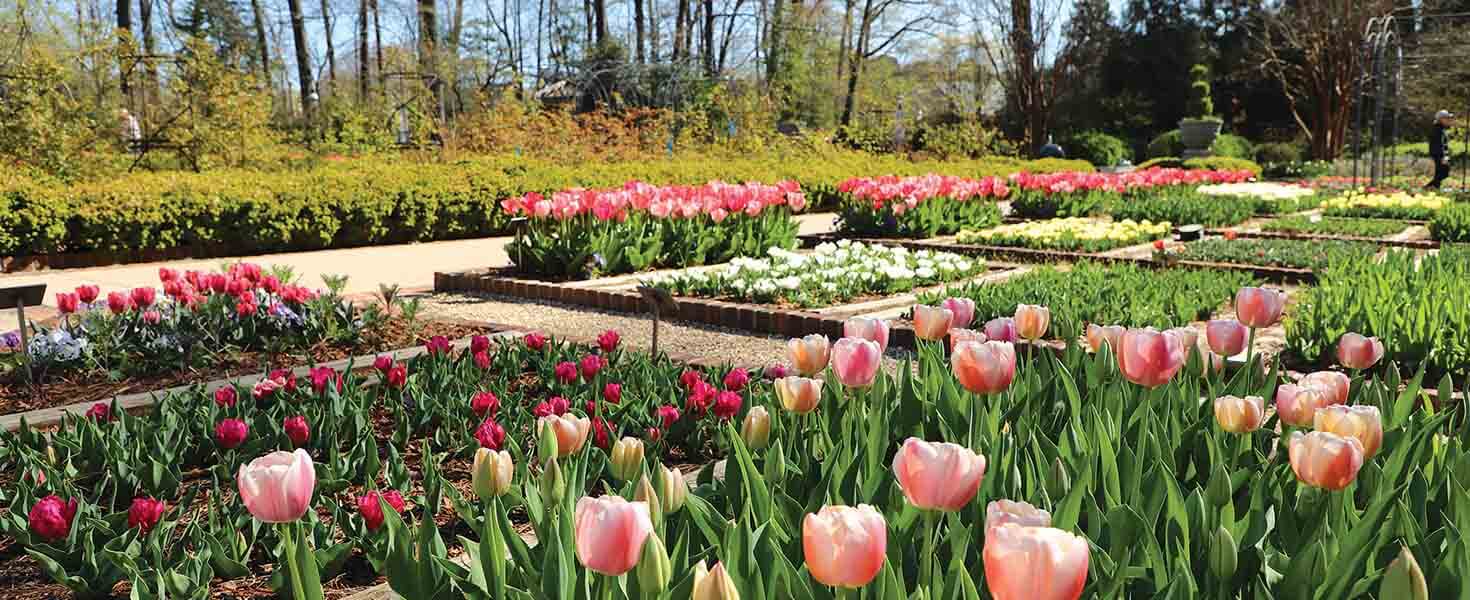Despite its reputation for colossal cold and snow, New York’s Queen City is an oasis of parks and gardens.
If Buffalo, New York, were on anybody’s travel radar in the past, it was likely to be viewed as a stop to grab some wings before heading to Niagara Falls. That’s changed in recent years as everyone from The New York Times to The Times of London has heaped praise on New York’s second city for its architectural wonders by Frank Lloyd Wright and Louis Sullivan as well as its revitalized waterfront and stellar arts scene.
Perhaps the greatest contributor to the city’s new-found allure is its wealth of parks and gardens. Yes, that snowy land way up in the northwestern part of New York state, just a hop, skip, and a jump from Canada, can hold its own with any gracious Southern landscape or pastoral California setting. From one of the most expansive projects by celebrated landscape architect Frederick Law Olmsted to the country’s largest gardens tour, Buffalo is ever-blooming.
Buffalo’s reputation for green space begins with Olmsted, who’s best known for designing New York City’s Central and Prospect Parks. From 1868 onward, Olmsted worked in Buffalo with his design partner Calvert Vaux to craft America’s first planned greenway system, comprising six parks connected by a series of landscaped boulevards and circles. The two also designed a handful of smaller green spaces in the area, such as the grounds of the Buffalo State Hospital, which was recently transformed into a swanky hotel and conference center. Olmsted—along with Frederick A. Lord and William Burnham, then the country’s premier makers of glass greenhouses and public conservatories—also deserves much of the credit for the design of the 11-acre Buffalo and Erie County Botanical Gardens, which opened in 1900 and is now a National Historic Landmark.
Visitors to the city will encounter even more of Olmsted’s and Vaux’s handiwork as they explore attractions such as the Albright-Knox Gallery, the Buffalo History Museum, the Buffalo Zoo, and the new lakeside Terrace restaurant, all of which are located in the system’s signature 350-acre Delaware Park. Elsewhere, bicyclists, pedestrians and motorists enjoy the parkways on their way to Kleinhans Music Hall or when seeking out the marker that denotes the spot where President William McKinley was assassinated while visiting the Pan American Exposition of 1901.
LANDSCAPE BY FRANK LLOYD WRIGHT
Buffalo likes to boast that its architectural inventory offers seven structures designed by Frank Lloyd Wright. (Granted, three of them—a gas station, boathouse and mausoleum—are minor and were built after Wright’s death.) But the real bragging rights are thanks to the recently completed 20-year, $50 million restoration of an important Wright-designed residence: the 1905 Martin House, part of the estate of Larkin Soap Company executive Darwin Martin.
The latest phase of the restoration presents a rare example of landscape design by the architect, the highlight of which is what Wright called a “floricycle,” a crescent-shaped arrangement of perennials intended to bloom successively from April (croci and snowdrops) into November (spindle trees). Other aspects of the restoration project include the refinement of privacy-screen foliage; the reinstallation of terrace and cutting gardens filled with daylilies, peonies, foxgloves and delphiniums; the replacement of curbside elm trees; and the addition of plants to ornamental urns.
“The gardens were planted after Mr. Martin had suffered from several strokes,” says Nellie Gardner, the residence’s horticulturalist. “He enjoyed their therapeutic effects until he died in 1935, and not long after [that], the house and its gardens fell into disrepair.” Landscape architects drew on more than 1,000 photos and various iterations of documents and publications from Wright’s office to design a renewed planting scheme that juxtaposes Wright’s preference for native plantings with a few of his exotic favorites, such as Japanese wisteria.
GARDENS WITH GRIT
Green space also beckons visitors to Silo City, a collection of grain elevators and silos that serve as a fascinating testament to Buffalo’s industrial heritage. Since purchasing these relics and the 27 acres of waterfront land that they sit on, local businessman Rick Smith has converted the site into a gathering space that hosts a happening bar, architectural installations and a lively schedule of cultural events throughout the year.
Most significant for garden enthusiasts is the creation at Silo City of trails, native meadows and pollinator gardens designed to bring back to the area fish, birds, and butterflies while also illustrating the beauty of less showy plantings such as Monarda, Echinacea, and Coreopsis (think bee balm, coneflower, and tickseed).
WALKING THE (GARDEN) TALK
While Buffalo stimulates the senses with an abundance of flora year-round, that headiness peaks in late July as the entire city succumbs—just like the Dutch did centuries ago—to a severe case of Tulipmania. It’s time for Garden Walk Buffalo, when some 400-plus homeowners open their gardens—spilling over not just with tulips, of course, but also with dahlias, zinnias, clematis, begonias, and more—to tens of thousands of visitors. This year’s event is scheduled for July 25 and 26.
“[The Garden Walk] began 25 years ago when a handful of neighbors got together and said, ‘let’s organize a walk so we can see each other’s gardens,’” says Sally Cunningham, a Buffalo-based garden writer and tour guide. “And it’s grown into this very large but still egalitarian effort. There are no judges, anyone can participate, and there’s no cost to tour the gardens.”
Buffalo-style gardens are determinedly urban, decidedly small, and definitely eccentric. Forget sweeping lawns; instead, think nestled containers. While you stroll, let your imagination wander. You might encounter a Japanese- or English-style garden, but the governing aesthetic is funky. Wine bottles are transformed into lamps, lawn mowers turned into planters, and bowling balls converted into fountains. Never daunted, Buffalonians aren’t shy about tackling even those inhospitable curbside patches of grass that are trod upon by dogs, bikes, and car passengers. Whether bursting with black-eyed Susans or subdued with succulents, these “hellstrips” are transformed into something heavenly.
Most of the open gardens along the self-guided tour (on foot, via free shuttle or by car) are concentrated in the contiguous neighborhoods of Allentown, Symphony Circle, and Elmwood Village (where you should seek out the picturesque cottage district of Little Summer Street).
Last year, the Parkside neighborhood, home to the Martin Complex, also joined the festivities.
This article originally appeared in the March/April 2020 version of AAA World.








